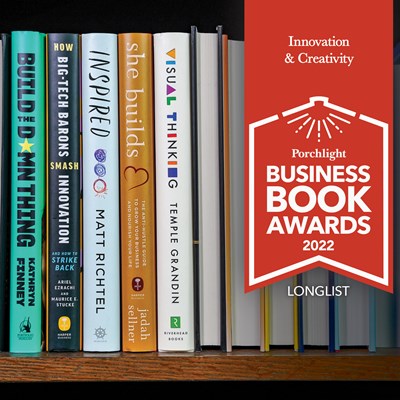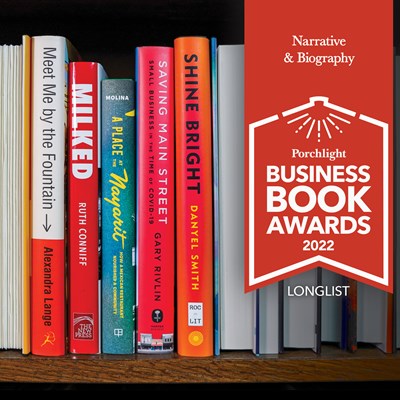Inside the 2022 Longlist | Marketing & Communications/Sales & Influence
November 25, 2022
As the books being submitted to our awards have evolved and expanded over the years, we decided it was time to evolve and expand for the name of the Marketing & Sales category.
We have been talking about updating something about the Marketing & Sales category for a few years now. Looking over the list of books we were reading and discussing during our deliberations for the awards this year, we decided it was high time to do it. I work in marketing, and two of my brothers work in sales here at Porchlight Book Company, so I don’t have a negative outlook on those words or the work it entails. But it still felt a little crass using those terms (at least those terms alone) for this year's best books on how to communicate and move people to action—whether those actions were attempting to drive people to the cash register or to the voting booth. Business books have been evolving for some time to embrace work outside of the corporate setting or for individual entrepreneurs, and we have evolved along with them. And the term “Marketing & Sales” didn’t seem to fully capture the full range we were seeing submitted in that category—the important research and real-world actions taken to connect and converse with people, to influence and persuade, to move and shape conversations and emotions across a wide spectrum of professions.
One of the paradoxes of marketing in recent years is how, as it has become more algorithmic, it has also become more obsessed with human psychology. We have entered an age of surveillance capitalism where machines are learning more and more about us not to uncover any underlying truth, but to improve the microtargeting of ads. Recent years have seen marketing books go beyond human psychology into the realm of artificial intelligence and deep learning. We’ve recommended some books in that vein in the past, but two of the books on this year’s list discuss the deep canvassing being done by people going out and knocking on doors. Marketing has come to be dominated by discussions about how to change people’s behaviors. We would like to take some time to look at how we might change people’s minds—maybe even their hearts. Some big tech firms have been run like a giant psychological experiment on society. We wonder how we go about our ongoing experiment in self-governance and determination amid the pressures put upon it.
The name may evolve further in the years to come, but the best books in what we’re choosing to call the Marketing & Communications/Sales & Influence category this year all have human beings and human motivation at their center.
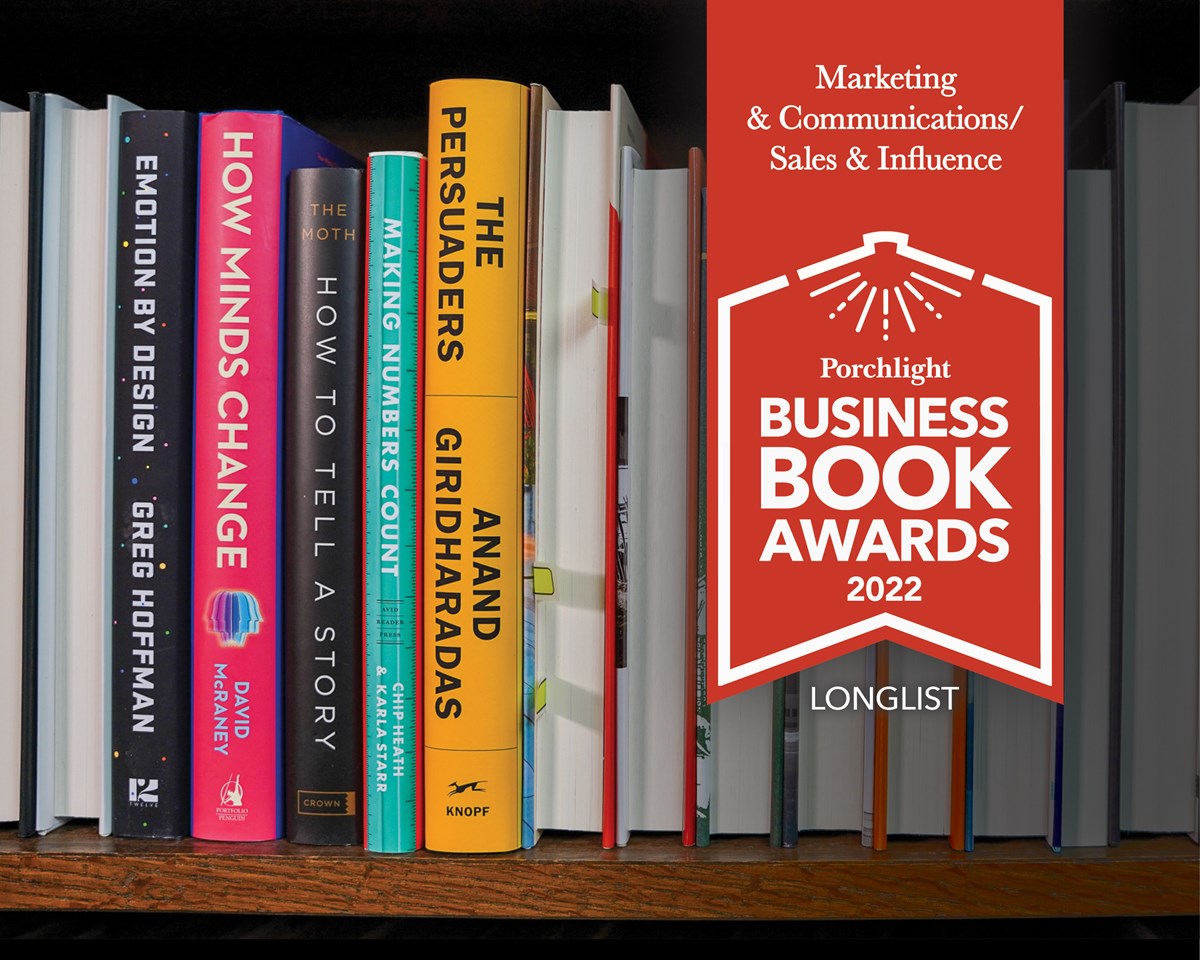
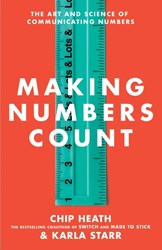 Making Numbers Count: The Art and Science of Communicating Numbers by Chip Heath & Karla Starr, Avid Reader Press
Making Numbers Count: The Art and Science of Communicating Numbers by Chip Heath & Karla Starr, Avid Reader Press
There is a thought experiment Chip Heath and Karla Starr share in Making Numbers Count about the difference between “a million” and “a billion” that boils down to this: If you are given $1 million dollars on Thanksgiving and spend $50,000 a day, you will be out of money by Christmas. If you are given $1 billion and spend $50,000 a day, it will last you for 55 years! We hear politicians use the term “millionaires and billionaires” quite a bit, but seeing it in this light suggests we should not conflate the two so easily. Our very first business book of the year award, way back in 2007 when our company was called 800-CEO-READ, went to Dan and Chip Heath’s Made to Stick. It was a seminal business book in many ways, a business book that you’d see “non-business types” reading on the airplane or carrying into a coffee shop. I hope Making Numbers Count finds a wide audience, as well, because I believe as they believe, that “the world becomes a better place when we use numbers more often and more wisely.” To convince anyone of anything, in any profession, you are increasingly going to be asked to back it up with numbers. Statistics are often twisted to lie to us, but teasing the underlying truth of those numbers, and translating for others in a way that not only moves, but awes them, is possible. And it remains a simple fact that most of us are persuaded more by what we experience emotionally through stories and our own experience than by numbers on a spreadsheet. For instance, we are moved when we see hunger, destitution, or suffering expressed on the face of another human being but remain unmoved when statistics show us how widespread hunger, destitution, and suffering are in the human population. Heath and Starr will teach you ways to close that gap, to make others truly feel the numbers you need to convey.
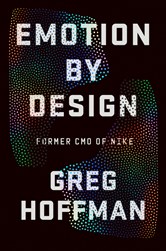 Emotion By Design: Creative Leadership Lessons from a Life at Nike by Greg Hoffman, Twelve
Emotion By Design: Creative Leadership Lessons from a Life at Nike by Greg Hoffman, Twelve
Greg Hoffman knows about the power of connecting to people’s feelings, and to their sense of purpose, and to their passions, and their ambition. There is a good chance Hoffman either participated in or led some of your favorite ad campaigns during his tenure as Nike’s Chief Marketing Officer. He started at the company as the youngest member of its Image Design team when he was just 22, at a time when Michael Jordan, Bo Jackson, and Andre Agassi transcended sports to become cultural icons. His last project was iconic on its on—featuring Colin Kaepernick proclaiming we should “Believe in something. Even if it means sacrificing everything.” This at a time when he was blackballed from the NFL and the former president was attacking athletes for expressing their political opinions and taking a stance on social justice issues. Before diving headlong into the branding wisdom he has gained over his years and how he put it into practice at Nike, he begins the book telling us of his own journey to design school in Minneapolis, and the unexpected detour that led him in his parent’s camper van to the company’s Oregon headquarters. He has reached the heights of his profession, and he has come away knowing this: that “brands have come to prioritize transactional relationships with consumers, when they should be building human relationships.” There is one other great quote that I believe helps introduce not only the best approach to doing the work, but the other four books in the category:
“Cynicism is our opponent, and we must constantly fight against it.”
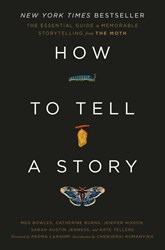 How to Tell a Story: The Essential Guide to Memorable Storytelling from The Moth by Meg Bowles, Catherine Burns, Jenifer Hixson, Sarah Austin Jenness, and Kate Tellers, Crown
How to Tell a Story: The Essential Guide to Memorable Storytelling from The Moth by Meg Bowles, Catherine Burns, Jenifer Hixson, Sarah Austin Jenness, and Kate Tellers, Crown
Over two decades ago, The Moth popularized a format of personal storytelling that caught fire and spawned little sparks of similar events across the country. The power of stories and storytelling has been one of the most common topics in business books for many years now. But there is no better source than The Moth for understanding their power. And now, Meg Bowles, Catherine Burns, Jenifer Hixson, Sarah Austin Jenness, and Kate Tellers, who “along with The Moth’s artistic and workshop teams, have directed tens of thousands of stories told on stages worldwide,” have turned what they’ve learned over their long tenures into teaching us all how to hone their power by honing how we tell them. “We are,” the authors state, “a multitude of stories.” Which one you tell, on which occasion, is up to you. But by the end of this book, you all be a master at constructing one for any occasion—whether it be for a business dinner or for the launch of a political campaign, to share your authentic self while standing onstage or to connect intimately with a loved one. Storytelling is a craft, and they’ll teach you not only how to tell one better but remind us all why ours is so important. To see the world through another’s eyes is a gift. To show others the world through our own eyes and experiences is a gift we can give them.
But, sometimes it gets a little complicated.
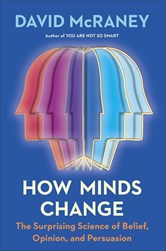 How Minds Change: The Surprising Science of Belief, Opinion, and Persuasion by David McRaney, Portfolio
How Minds Change: The Surprising Science of Belief, Opinion, and Persuasion by David McRaney, Portfolio
It can feel as if we are living in completely different realities, and to a certain extent, we are. To explain how and why, David McRaney turns to the phenomenon of The Dress—which some people famously saw as blue and black, others as white and gold, and argued incessantly over online, at the office, or wherever you happened to be when someone next to you saw something you didn’t. While the color of a dress may be of little consequence, our views on reproductive rights, or our understanding of the efficacy and safety of vaccines, and how we perceive a host of other issues on which we are bitterly divided today are of monumental importance to our lives. And it turns out that the way we come to conclusions on those issues is based on the same process of disambiguation that caused people to see different colors in the picture of The Dress.
The level of animosity in our public debate has become debilitating. If we are going to continue to govern ourselves effectively, we can’t remain as divided as we are today. To lessen the level of division, we need to learn how to talk to each other even when we disagree. We also need to understand the nature of disagreement better. McRaney accomplished both, explaining why relaying facts is less persuasive than engaging with others lived experiences and emotions, and how we can change others’ perceptions through withholding our condemnation and engaging in conversation.
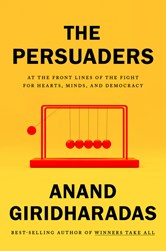 The Persuaders: At the Front Lines of the Fight for Hearts, Minds, and Democracy by Anand Giridharadas, Alfred A. Knopf
The Persuaders: At the Front Lines of the Fight for Hearts, Minds, and Democracy by Anand Giridharadas, Alfred A. Knopf
I don’t believe there is anything more important to persuade people of than the need to preserve democracy. Many talk about the potential for a new Civil War in America, even as it often feels as if we may already be in the midst of an incredibly slow burning one. And it’s not just in the United States. The battle between democracy and autocracy is playing out around the world, and became a live war in Ukraine this year.
Anand Giridharadas reminds us that the greatest danger inside our own experiment in self-governance is not those who we disagree with, but the tendency we have to write them off as unchangeable, immoral, unsavable, as not even worth the effort. Giridharadas begin The Persuaders with a terrifying account of the Internet Research Agency’s success in sowing division in the American electorate on social media in the run-up to the 2016 presidential election (with rich details I’ve never read or seen reported elsewhere), but he leaves us with a lot of, dare I say it, hope in the end. Along the way, he explores the efficacy (or lack thereof) of the rush to promote and provide DEI training after the Black Lives Matter protests swept the country in the summer of 2020, interviews the organizers of the original movement that was there to meet that moment, profiles politicians who have created movements of their own, finds those who are finding some success at battling disinformation online, and tags along with people putting in the work to knock on doors and understand what it looks like when people engage with each other in the greatest experiment of them all.











